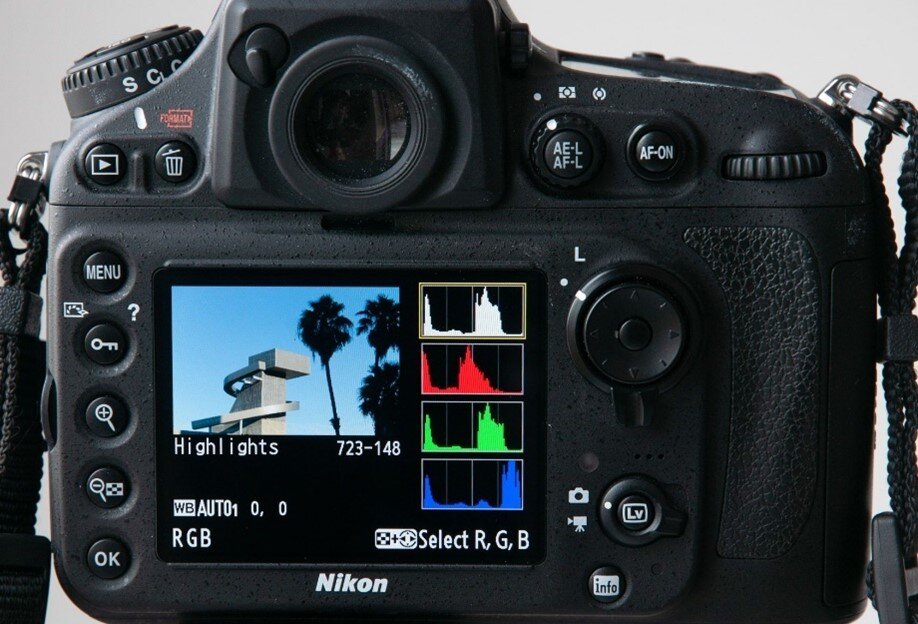IMAGE CAPTURE
Here is where we discuss aspects and means of capturing the data that goes towards making an image
“The Camera is an Idiot -
Why your camera lies to you and what you can do about it” By Michael Smyth
Our cameras are recording devices, capable of capturing an incredible amount of data, but they are very poor at communicating that to the operator. The image shown on the camera back is inaccurate, the exposure reporting is unreliable and the colours at best patchy. Why is this so? There are Five things that our cameras do that drive photographers crazy. Read More…
What the camera shows on the screen is not accurate, so how do you assess the image ?
“Capture” By Michael Smyth
Capture is the first part of the process of turning an idea or concept into a resolved image. It is NOT the image, merely the data that goes towards making an image. In essence, it is the “Digital Negative”.
Photographers who learnt their skills using transparency film have been brought up thinking that once the shutter is pressed, the image is more or less complete. In the digital age, we have new tools at our disposal and the image making process continues from the capture stage to the processing and enhancement activities that will result In the creation of a completed image. To continue the film analogy, Process and enhancement equate to the processing of the film and all of the darkroom work that goes to making a photographic print. Read More...
Kirkusfell, Iceland by Michael Smyth
“Exposure for Creative Image Making”. By Michael Smyth
Exposure in its simplest form is the process of allowing a specific amount of light to fall on the sensor (or film) in our camera. The camera controls that affect the amount of light that reaches the sensor are:
The Aperture of the lens being used, The Shutter Speed selected, and The ISO sensitivity setting applied. To read more,
Click HERE to open and download the PDF notes.
Beach Ice, Jokulsarlon Iceland by Michael Smyth
“Flash Photography” By Michael Smyth
This tutorial introduces the use of flash as part of the photographic process. Incorrect or inappropriate use of flash often leads to disappointing results, so many photographers are put off using this valuable tool. Here we explain the basic principles and uses of flash. Read More...
Bathing beauties, Western Australia by Michael Smyth - shot with fill flash.
Camera Basics by Michael Smyth
This tutorial is designed to introduce new photographers to the basics of cameras and camera operation. Read More...
Weindorfoers Forest Tasmania by Michael Smyth
Choosing a camera by Michael Smyth
Chances are if you have been looking for a camera to buy, you have been overwhelmed by the choices available. Here we provide an outline of the different camera types and the pros and cons associated with each choice.
When looking at a camera purchase, there is no “right” or “wrong” choice. There is, however a “right” camera for your purpose and you should think long and hard before purchasing a camera specifically for travel or any other purpose. You should also bear in mind that with compact cameras particularly, the price of the camera will be at its maximum when the model is new, declining as the model ages (usually 6-12 months) and finally is at the lowest level just before it is superseded. If you are not concerned about having the latest model, it is quite possible to save substantial money by buying a near superseded model. Read More...
Confused about choice of cameras ? you're not alone...
Choosing a lens for a DSLR by Michael Smyth
All cameras have a lens. The lens is used to focus the image onto the film/sensor. Chances are if you bought a camera with a lens, it will be a short zoom. These are a good starting point, but at some point you are going to want something with either a wider angle of view, or a longer telephoto. Read More...
Smile !, old Caddy by Michael Smyth taken with ?
Close up and Macro photography by Michael Smyth
Macro Photography is generally defined as a type of close up photography where the image obtained is at or greater than life size. A macro lens is defined as a lens capable of rendering images at 1:1 or greater. Macro lenses are lenses capable of focussing on objects that are very close to the sensor in order to be able to magnify their size.
Typically a photograph is considered to be a macro photograph if the resulting image is reproduced at greater than life size, although this is a bit of a fluid concept. Read More...
Garlic by Michael Smyth








